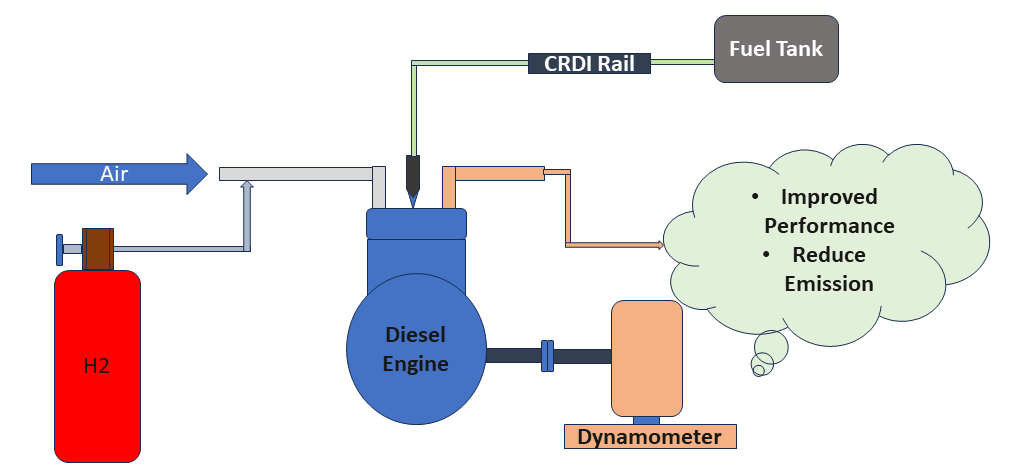
Since hydrogen gas is a plentiful element in the universe, using it as fuel for IC engines has the potential to reduce pollution while also improving the engine performance. Hydrogen gas as fuel has many advantages, including a high energy density, a rapid flame speed, clean burning, and a short quenching distance. When compared to pure diesel as fuel, alternative fuels like biodiesel (a mixture of lemon and orange peel oils) are utilised in this experiment to reduce exhaust emissions. In addition to biodiesel, hydrogen induction is used in dual fuel technology to boost the power of engine while minimising emissions and improving the fuel efficiency and fuel economy. Hydrogen gas is utilised, the engine consumes less biodiesel fuel, thereby reducing the fuel cost. According to experimental findings, a reduction in the brake-specific energy consumption of 23.48% and a rise in brake thermal efficiency of 33.4% are observed for pure diesel along with 6lpm of hydrogen gas. Therefore, hydrogen is a potential fuel to drive the internal combustion engine to produce more power and by minimizing the exhaust gas emissions.
Total file downloads: 52